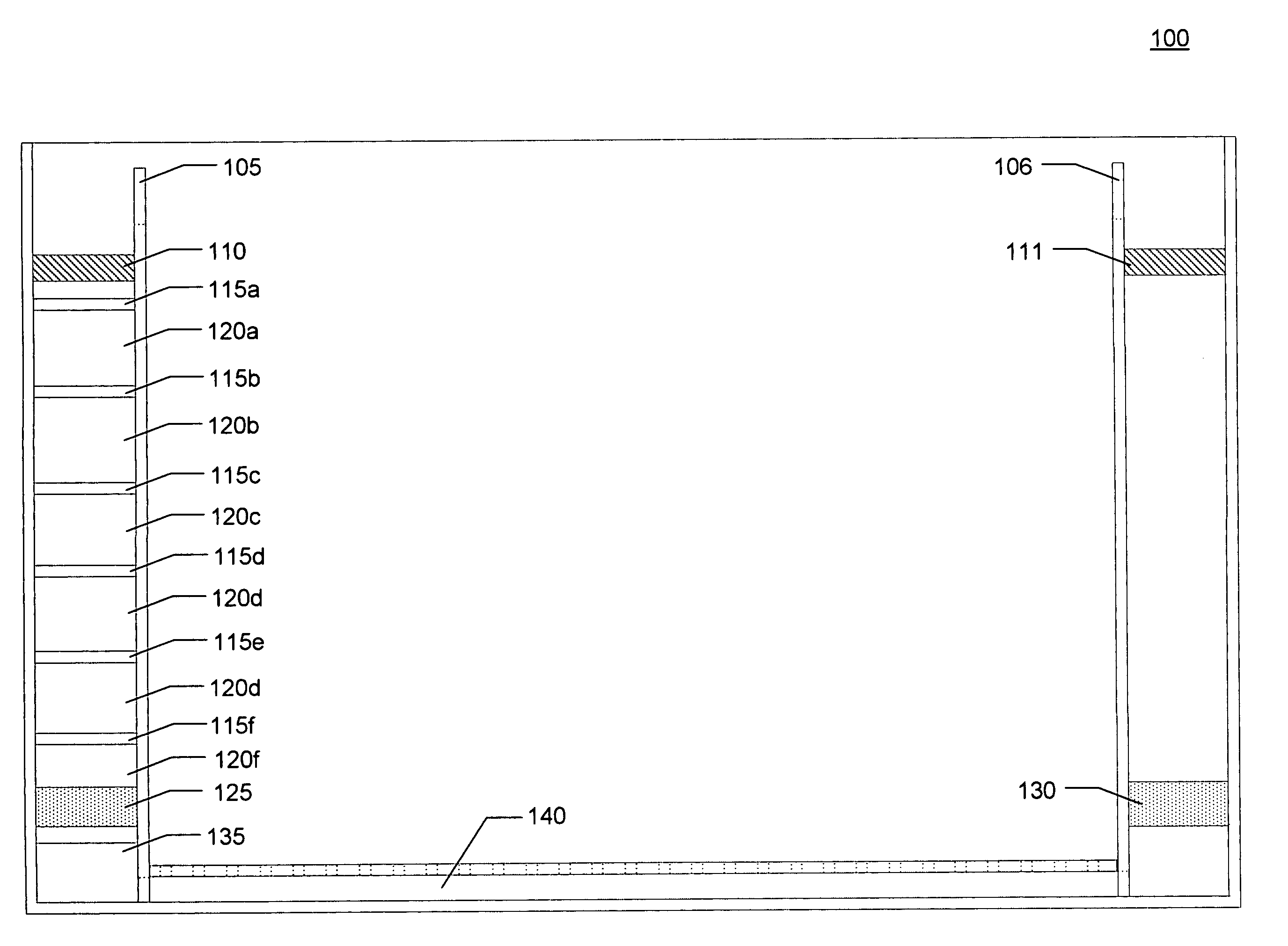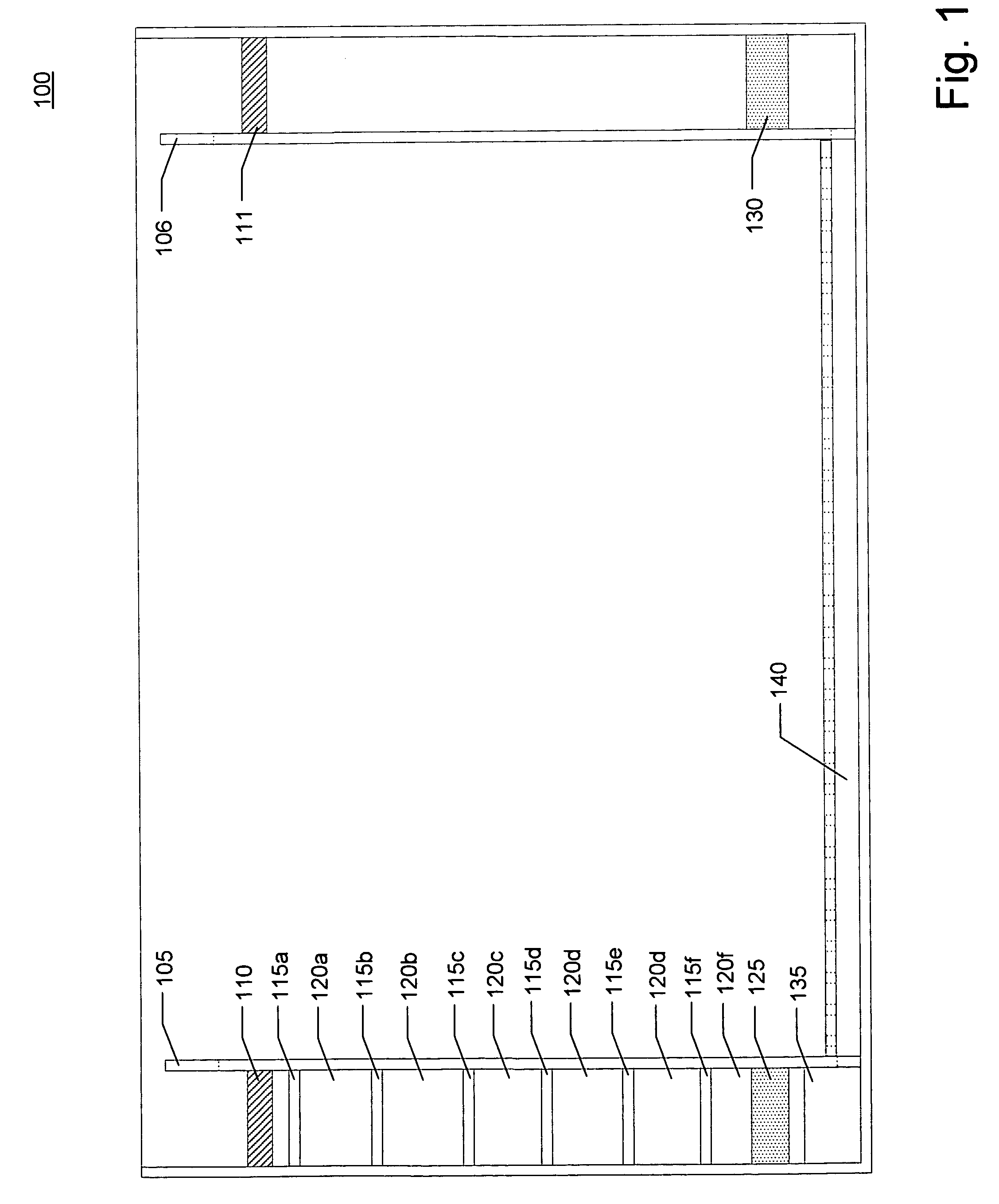Aquarium filter
a filter and aquarium technology, applied in the field of aquarium filters, can solve the problems of turbulence or current, ‘dead’ spots in the aquarium where water can stagnate, ‘dead’ spots in the aquarium, etc., and achieve the effects of facilitating constant drip, facilitating water flow, and facilitating constant drip
- Summary
- Abstract
- Description
- Claims
- Application Information
AI Technical Summary
Benefits of technology
Problems solved by technology
Method used
Image
Examples
Embodiment Construction
[0032] In general, the present invention can be described as a novel aquarium filter that treats water mechanically, chemically and biologically, provides maximum and uniform circulation and aeration of water, prevents channeling, reduces surface debris, reduces leaking and clogging, maximizes the viewable area, facilitates a slim profile, while being uncomplicated to install and inexpensive.
[0033] Referring now to the figures, in which like numerals refer to like elements throughout the several views, exemplary embodiments of the present invention are described.
[0034] In conjunction with FIGS. 1 & 2, exemplary embodiments of the present invention are depicted by an aquarium filter 100 comprising a first surface skimmer 105, a second surface skimmer 106, a first mechanical filter 110, a second mechanical filter 111, a plurality of drip trays 115a-f, a plurality of biological filters 120a-f, a first chemical filter 125, a second chemical filter 130, a pump 135 and a conduit 140.
[0...
PUM
| Property | Measurement | Unit |
|---|---|---|
| chemical | aaaaa | aaaaa |
| shape | aaaaa | aaaaa |
| area | aaaaa | aaaaa |
Abstract
Description
Claims
Application Information
 Login to View More
Login to View More - R&D
- Intellectual Property
- Life Sciences
- Materials
- Tech Scout
- Unparalleled Data Quality
- Higher Quality Content
- 60% Fewer Hallucinations
Browse by: Latest US Patents, China's latest patents, Technical Efficacy Thesaurus, Application Domain, Technology Topic, Popular Technical Reports.
© 2025 PatSnap. All rights reserved.Legal|Privacy policy|Modern Slavery Act Transparency Statement|Sitemap|About US| Contact US: help@patsnap.com



